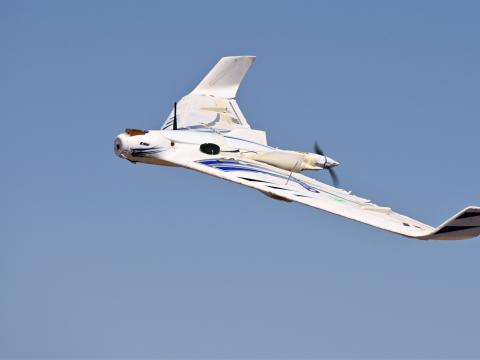President's Commentary: Humans Are Holding Back Unmanned Systems
The potential for unmanned devices, which seems unlimited, is being hindered by the human element they support. Planners must abandon convention and explore disruptive approaches.
Robots, drones, automated devices—they are but a few of the names given to unmanned systems proliferating across the military and the commercial sector. The sky’s the limit for unmanned aerial vehicles, and no ocean is too deep for their underwater counterparts. Yet the potential for these devices, which seems unlimited, is being hindered by the human element they support. Planners must abandon convention and explore disruptive approaches that will allow unmanned systems to reach their full promise.
From a military perspective, these systems are key enablers for the future force. They will allow the services to put capabilities in harm’s way without endangering humans. These capabilities could include intelligence, surveillance, reconnaissance, munitions, logistics delivery or other functions.
Even armed with this knowledge, planners have not yet maximized the capabilities of these systems. They have barely scratched the surface. In addition to information gathering, unmanned systems could be used for delivering an effect—kinetic or even electronic—to enemy forces. Drones carrying electronic warfare payloads could shut down an adversary’s networks before the foe begins to encounter friendly forces. Allied unmanned systems could wield anti-access/area-denial (A2AD) capabilities just as easily as they could counter the enemy’s own A2AD activities.
Many of these capabilities are being fed by a significant uptick in commercial applications. Agriculture, deep-sea mining, law enforcement and homeland security are just a few of the sectors that, in some cases, use capabilities that can be applied to defense missions. The military is challenged to leverage these commercial advances.
Advanced sensor development opens the door to better surveillance techniques. Unmanned systems already can perform soil analysis, and similar approaches could help determine if enemy forces were recently in a particular location. Sensors used for detecting and measuring hazardous materials can warn of chemical weapon residue or ongoing attacks. Theater forces can have better weather situational awareness. National technical means can be downsized to airborne platforms with greater precision and more timely application.
Still, many challenges slow the advancement of unmanned systems. One of the bottlenecks involves information systems. Stovepiped architectures have created data repositories that do not work together, which also makes it difficult for users at the point of the spear to reach back and take advantage of all the data collected by unmanned systems. We need to be able to aggregate this data in ways that allow all potential users to exploit it to the fullest. Incorporating information from unmanned systems into big data will improve knowledge-based action dramatically.
And when this information is available to all, the decision-making process must be revisited. Perhaps decisions must be moved up to higher levels of command. Or better situational awareness at lower operational levels could bring that decision making down to individuals. We might see a progression from mission-type orders to prescriptive action.
But these issues involve processes based on the present outlook for unmanned systems. The next step in their development must go well beyond conventional thinking. Many of today’s applications replace human activities directly with semiautonomous or even autonomous devices. Machines basically are taking the place of people. But we can do better than that.
The real breakthrough in unmanned systems will come when planners begin to use them in roles never envisioned. Instead of simply replacing people or even less-efficient machines, the devices would operate in innovative ways that change the nature of warfighting. Planners need to think of unmanned systems coupled with artificial intelligence—not as human surrogates but as totally new capabilities that can write their own ticket. This approach will change both system design and missions, and it will create an entirely new discipline in the battlespace.
But that still leaves the thorny issue of integrating innovative unmanned systems into overall force doctrine and systems architecture. Early efforts should focus on incorporating them with advanced information processing tools such as artificial intelligence and machine learning. Again, data is the linchpin of unmanned system effectiveness.
All of these efforts will, of course, spawn their own challenges. Planners must determine exactly how smart they want these new unmanned systems to become. Should they be able to recognize certain scenarios and then react according to programming? Should they be able to access big data to help their decision making? How much operational freedom or even autonomy should they have?
Unmanned systems largely have been guided by technology evolution. They now are ready for revolutionary design influences. But planners must weigh many factors as they plot the future.




Comment
Response to "Humans Are Holding Back Unmanned Systems"
Excellent commentary, Sir. You've described something I call beyond thinking outside the box, but "Thinking Without a Box." It is simply thinking unconstrained by those things we are currently trained to know and understand about how we operate, think, behave, and structure ourselves.
The largest problems when dealing with autonomous or semi-autonomous machines in this environment is knowing when and how to interject necessary checkpoints or calls for things like the rules, laws, and ethics of warfare, and decision points that simply must be made by a human, which are often immediate value-based, situational decisions.
While we may not want human thinking to hold back the potential for unmanned systems, I do believe we can agree that we always want ultimate human control over those unmanned systems, no matter how they are employed.
Comments